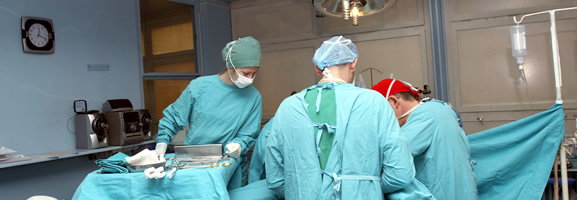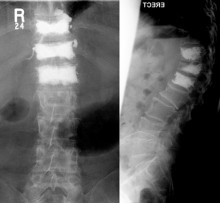Osteoporosis
The bones within the spinal column may become weaker and collapse (vertebral compression fracture), causing back pain. This can occur with osteoporosis (loss of bone density), which occurs within the aging spine. This condition is more common in women rather than men. It can be undetected for years, but only becomes apparent when a fracture occurs. Apart from being very painful there may be an associated change in the shape of the spine and some loss of height.
Why does this occur?
This may occur as part of the normal ageing process, particularly affecting women who are postmenopausal. Other factors, which may contribute to osteoporosis, include smoking, excessive drinking or prolonged treatment with steroids. Tumours may also weaken the bone resulting in a vertebral compression fracture.
What treatment options are there?
Initially patients are treated with analgesics for pain control and physiotherapy to assist mobility. The degree of osteoporosis can be assessed with a DEXA scan and medical treatment for the osteoprosis is begun as indicated, which will assist both in management of pain control, as well as helping to prevent further fractures.
If a tumour is suspected as the cause of the fracture, then further investigation with blood tests and MRI scan may be helpful in making the diagnosis.
New treatment for vertebral compression fractures
Medical management will often be sufficient to alleviate the symptoms of pain. However, in patients where symptoms are not manageable a minimally invasive procedure called Balloon Kyphoplasty may be indicated. This procedure stabilises the fracture using cement, reducing the pain. It also has the advantage of correcting some of the height loss and deformity caused the vertebral compression fracture.
Prior to surgery
The surgical procedure will be explained including the postoperative care and potential complications (see Complications), prior to you consenting to undergo the operation.
Surgery
- The procedure usually requires a general anaesthetic. Once asleep the patient is placed on their front and two 1cm incisions are made on the back at the level of the fractured vertebral bodies.
- A large needle s then placed into the fractured vertebral body, under X-ray guidance.
- Once the needle is in the correct place the balloons are inflated within the vertebral compression fracture to create a cavity and correct the deformity.
- The balloons are then removed and the cavity is filled with cement.
Post operative care
Post operatively patients are able to mobilize without restrictions and feel immediate pain relief. The majority of patients are discharged from hospital within 24 hours of the procedure.







